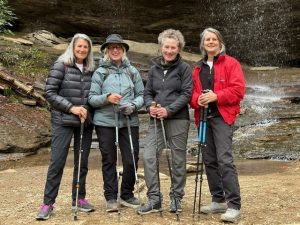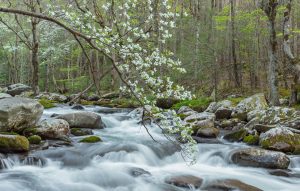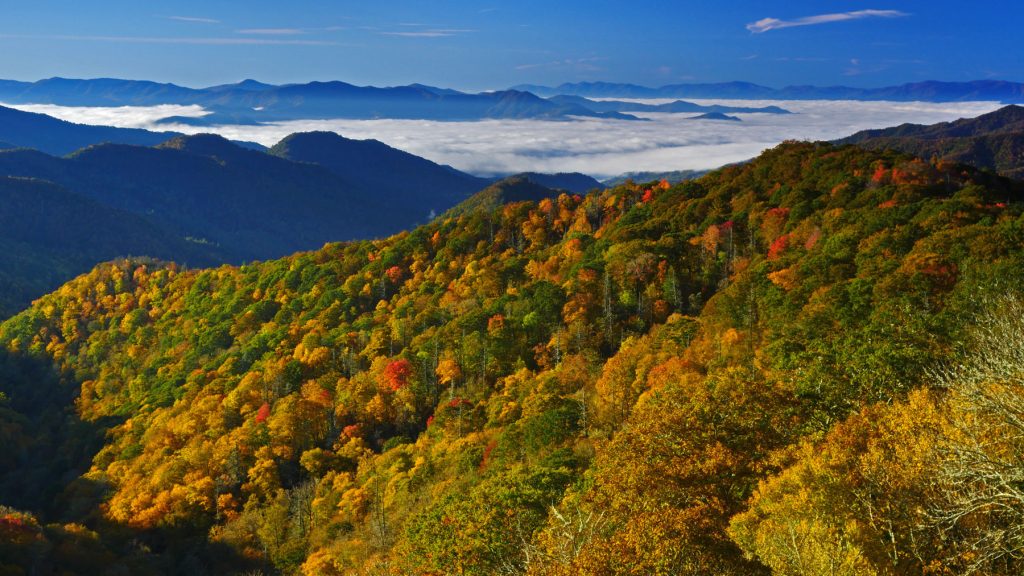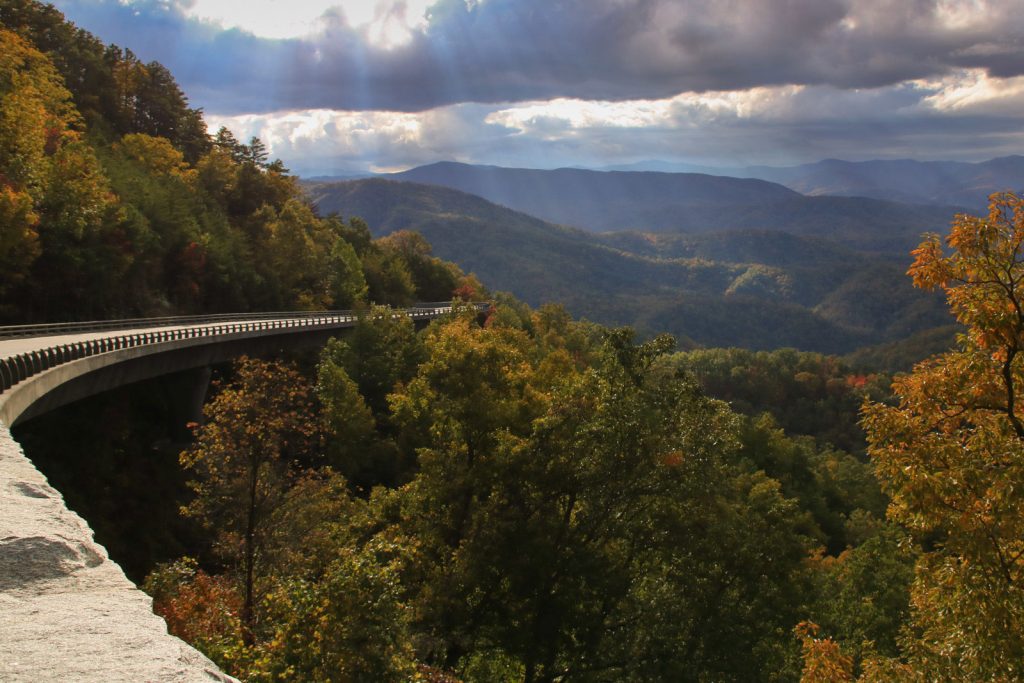
April 30 deadline to apply for Tremont Writers Conference
Frank X Walker and David Brill share a fascination with the Great Smoky Mountains. One

Frank X Walker and David Brill share a fascination with the Great Smoky Mountains. One


As the days grow warmer and the landscape ripples with color, a growing treetop chorus

Two decades ago, thousands of flies, bugs, and beetles met their end in insect traps

In the heart of Great Smoky Mountains National Park, the arrival of spring unveils a
There are a few magical moments that bring in the seasons of the Smokies.
The first snowflake blowing across the shoulders of Mount Le Conte or Mount Guyot beckons winter. The tiniest wildflower signals spring is close behind. An afternoon thunderstorm rolling across the ridge freshens the Little River and declares that summer has arrived. And, best of all, the first wisps of splashy leaf color hint at an approaching autumn.

Even now, along a Smokies roadway or hanging over a creek deep in the park, the first purples of sourwood and pockets of hardwood orange and yellow are pushing forth, heralding a summer-to-fall display that brings hundreds of thousands of visitors to the park and rivals any fall color season across the national park landscape.
Arguably, the coming weeks are the best time of the year to be in the Smokies, despite these truths: At times, traffic will be both heavy and annoying. The most popular trails will be crowded. Campgrounds will show “full” signs. Restaurants in communities adjacent to the park might have long waits.
These might be reasons to complain, but they are not reasons to miss the Smokies’ annual autumn array.
Smokies hiker Tom Harrington—a resident of Knoxville, Tennessee, and longtime park volunteer—has a few fall destinations to recommend. To get to the first one, you’ll just need to hike from Cosby to Mount Cammerer on the Low Gap Trail, the Appalachian Trail, and the Mount Cammerer Trail when the foliage is at its best.
“Stand on the observation deck of the Mount Cammerer fire outlook on a clear day and enjoy the blaze of colors on the surrounding mountains almost as far as the eye can see,” said Harrington. “Looking below toward Interstate 40, the foliage will often resemble the patchwork quilt that your grandmother may have made when you were a youngster.”
Another favorite is Laurel Creek Road in late October.
“Driving up the last mile before crossing over Crib Gap into Cades Cove can be difficult to adequately describe as the sugar maples go all out to strut their beauty,” said Harrington. “It seems as if the colors go from the top of the tall trees to the bottom as the fallen leaves on the ground contribute their part to the majestic scene.”

Not to be outdone, the Foothills Parkway still ranks as Harrington’s top destination for viewing fall color. “The two higher-elevation pull-offs on Foothills Parkway East facing the park can take your breath when the foliage is at its peak,” said Harrington. The views are especially stunning between 10 a.m. and 2 p.m. on a clear day.
My recent visit to a park store revealed more than a few items—particularly book covers and calendar photos—featuring the best of past Smokies autumns. You can take home a magnet, a bookmark, a sheaf of postcards, a DVD, and any number of books with vibrant displays of fall color.
It’s possible for professionals—and even the occasional amateur—to enhance photographs of the Smokies’ fall landscape with special lens filters or image-editing computer devices that put a more spectacular twist on reality. Yellows can be deeper, oranges can be more vibrant, reds can be redder. One of the cool things about the Smokies, however, is that such devices typically aren’t necessary.
If you arrive at the right place at the right time with the right weather, a cellphone shot of the park’s autumnal changes—either from a roadside overlook or a streamside resting spot—can capture the best parts of the season. If you want to try to include wildlife in your seasonal-change shots, most of the park’s mammals are more active in the early morning and early evening. The light is typically better for photographs at those times, too. And, by all means, don’t spend most of the trip gathering photos. Relax and fall for the moment.
Don’t delay. As Harrington points out, “There have been years when, just as the foliage reaches the peak of its beauty, a strong weather front will come through and dislodge many of the leaves from the trees. When that happens, it is super disappointing.”
Mike Hembree is a veteran journalist and the author of 14 books. He has visited 29 national parks and hopes to add many more to that list. You can keep up to date on the spectacle of autumn in the Smokies by checking Tom Harrington’s fall color reports.
The Great Smokies Welcome Center is located on U.S. 321 in Townsend, TN, 2 miles from the west entrance to Great Smoky Mountains National Park. Visitors can get information about things to see and do in and around the national park and shop from a wide selection of books, gifts, and other Smokies merchandise. Daily, weekly, and annual parking tags for the national park are also available.